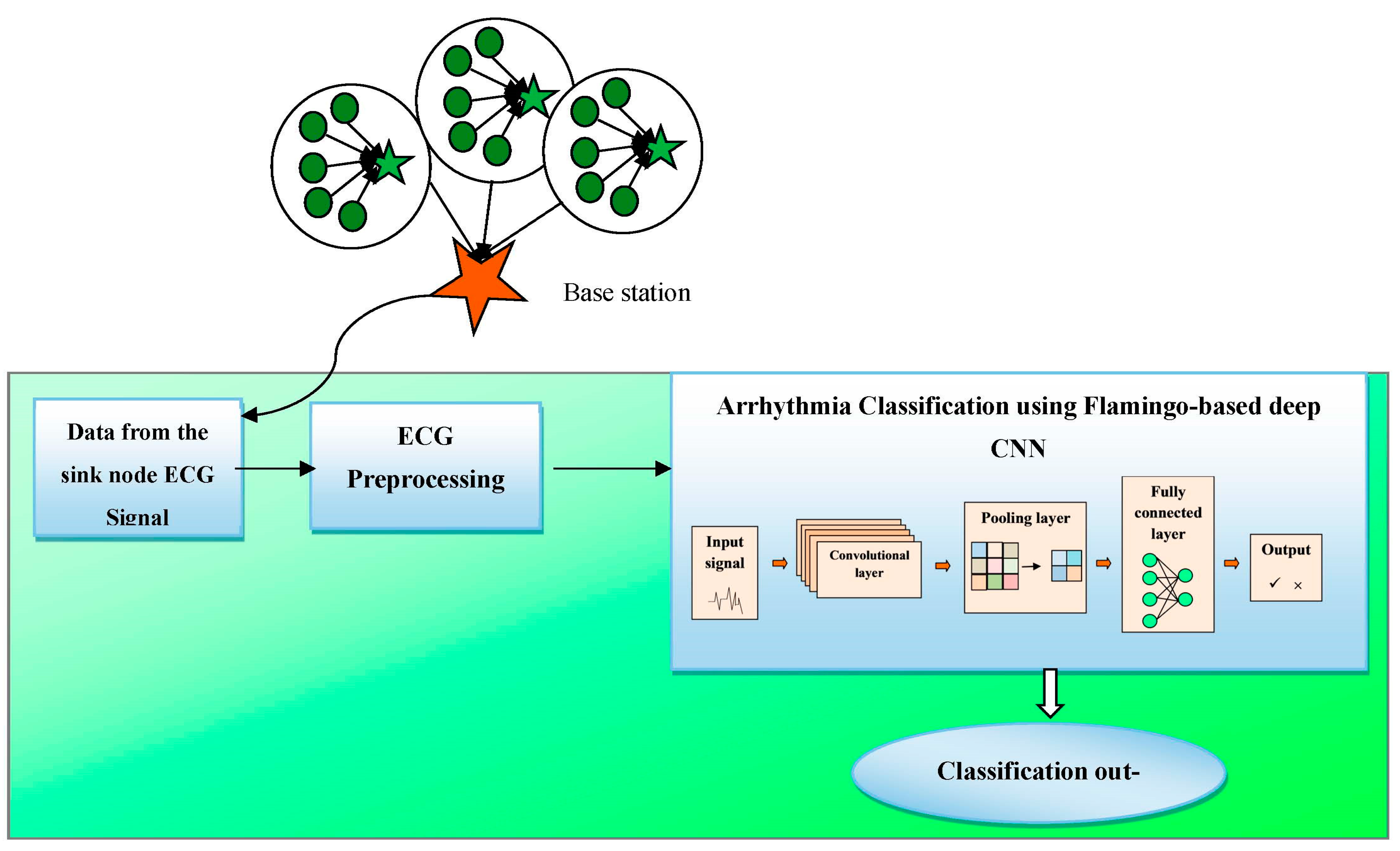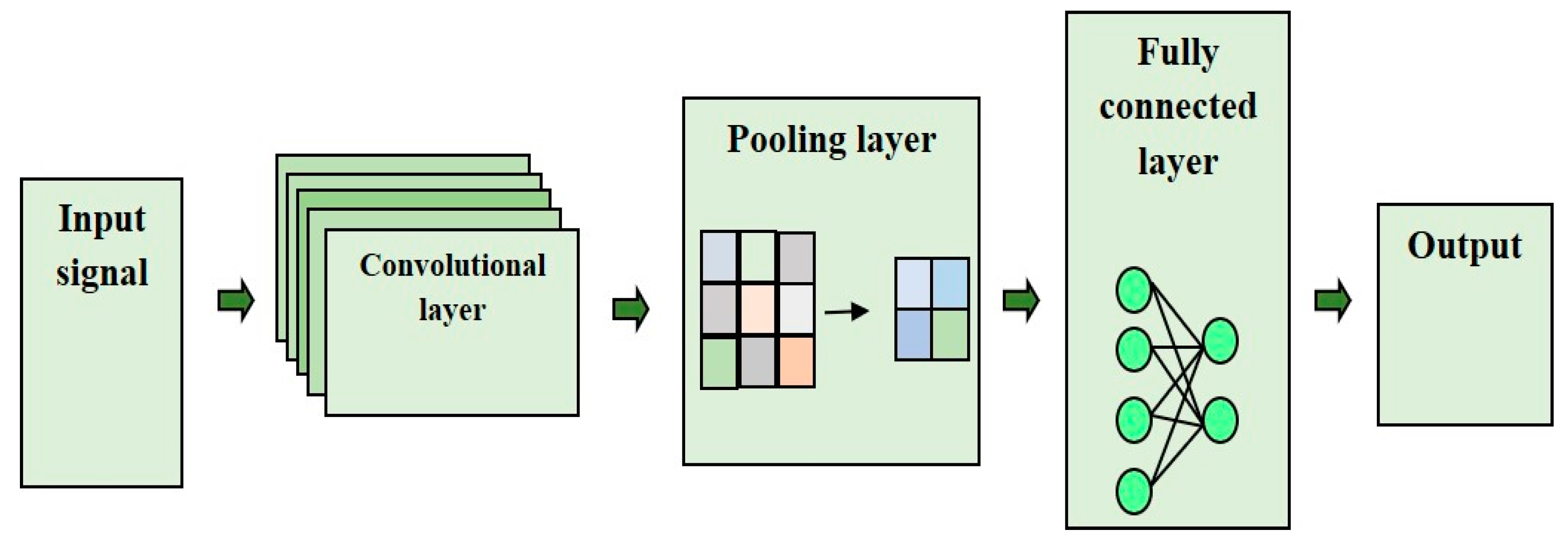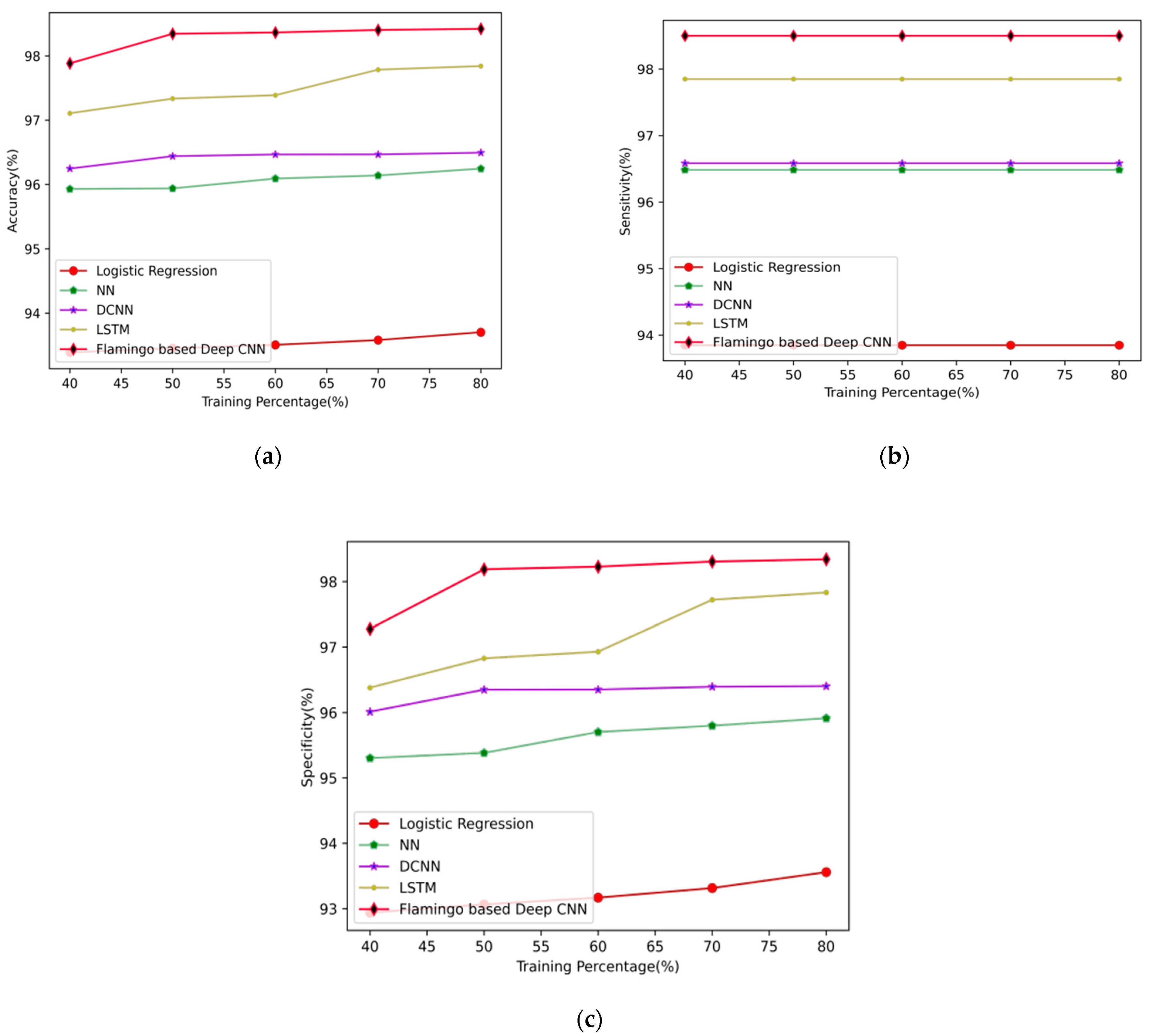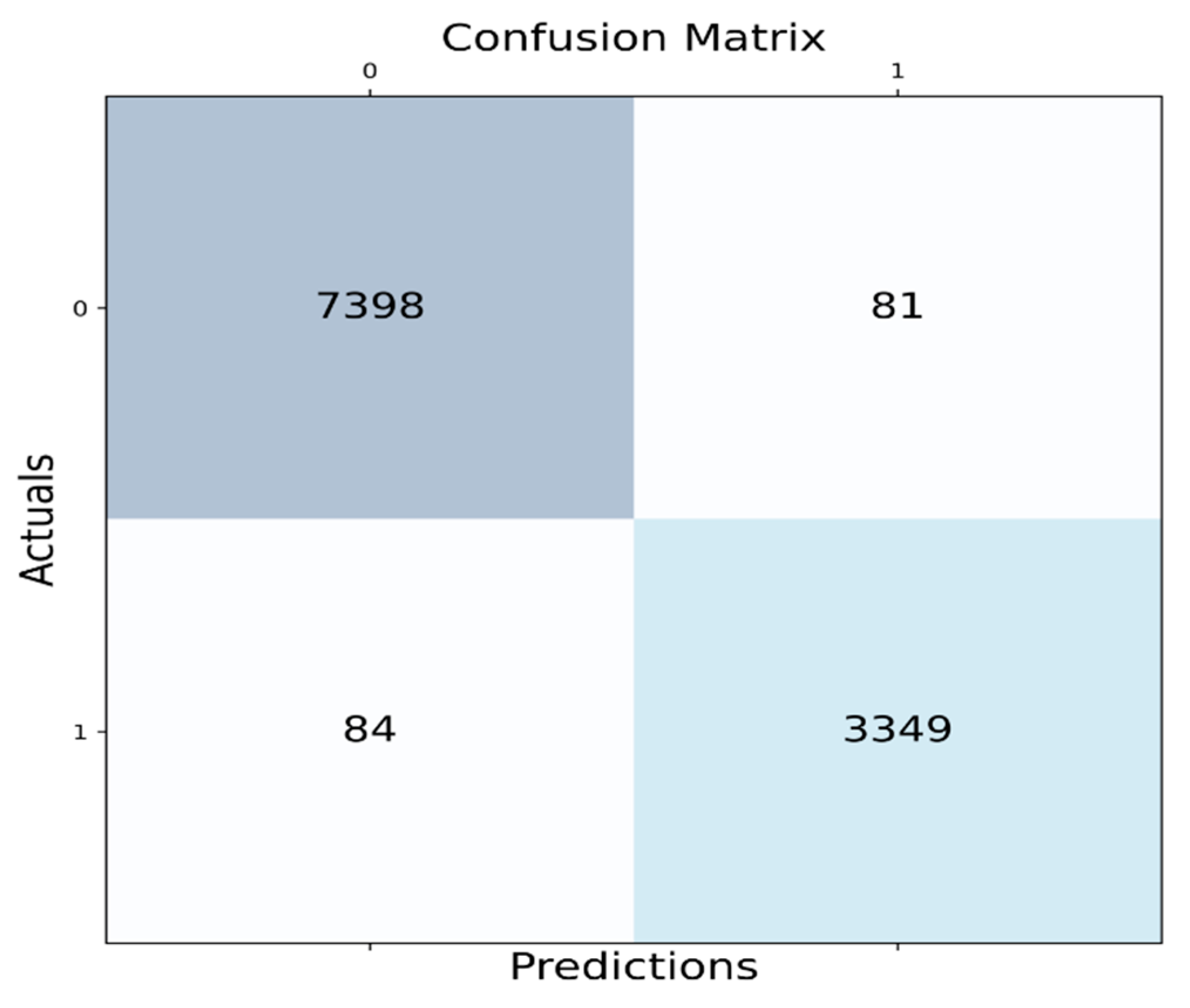Flamingo-Optimization-Based Deep Convolutional Neural Network for IoT-Based Arrhythmia Classification
Abstract
1. Introduction
- (1)
- The flamingo optimization effectively optimizes the hyperparameters of the classifier through the effective handling of the energy associated with bird hunting.
- (2)
- The DCNN model predicts the output with more accuracy and the information is conveyed to the patients in an effective manner for executing the diagnosis.
- (3)
- The data acquisition and classification setup are automatic without any human intervention.
- (4)
- The effective tuning of the classifier helps in the identification of the arrhythmia disease in less time and with faster convergence.
2. Background Study
- Optimizing the hyperparameters using efficient algorithms poses challenges.
- The most important challenge in homecare systems is accuracy because those systems are dealing with human health which is sensitive and needs high accuracy.
- A homecare system trusted by health experts should be able to detect abnormalities and make decisions in an accurate way.
- Long delays should be avoided for improving the efficiency of the models, reducing the delay, and improving the convergence possess challenges.
3. System Model of IOT Network
4. Disease Prediction Using the Flamingo-Optimization-Dependent Deep CNN Classifier
4.1. Preprocessing
4.2. Proposed Flamingo-Based Optimization for Arrhythmia Classification
Flamingo Optimization for Tuning the Hyperparameters of the Classifier
| Algorithm 1: Pseudocode for flamingo optimization. | |
| 1 | Initialization |
| 2 | Input: |
| 3 | Output: |
| 4 | While # is the maximal iterations |
| 5 | Scavenging behavior |
| 6 | If (Sociable behavior) |
| 7 | Initialize: |
| 8 | For Bill scanning behavior do |
| 9 | Maximum distance |
| 10 | |
| 11 | Varying scanning range |
| 12 | |
| 13 | Claw locomotive behavior |
| 14 | |
| 15 | Position update |
| 16 | Emigrating behavior |
| 17 | |
| 18 | Check the stopping condition |
| 19 | End |
5. Results and Discussion
5.1. Dataset Description
5.2. Experimental Setup
5.3. Performance Metrics
5.4. Evaluation Based on Performance for Arrhythmia Prediction Model
5.5. Comparative Evaluation
Comparative Methods
5.6. Comparative Analysis for Arrhythmia Prediction Model
5.7. Comparative Discussion
6. Conclusions
Author Contributions
Funding
Institutional Review Board Statement
Informed Consent Statement
Data Availability Statement
Conflicts of Interest
References
- Yildirim, O.; Baloglu, U.B.; Tan, R.-S.; Ciaccio, E.J.; Acharya, U.R. A new approach for arrhythmia classification using deep coded features and LSTM networks. Comput. Methods Programs Biomed. 2019, 176, 121–133. [Google Scholar] [CrossRef]
- He, J.; Rong, J.; Sun, L.; Wang, H.; Zhang, Y.; Ma, J. A framework for cardiac arrhythmia detection from IoT-based ECGs. World Wide Web 2020, 23, 2835–2850. [Google Scholar] [CrossRef]
- Antzelevitch, C.; Burashnikov, A. Overview of basic mechanisms of cardiac arrhythmia. Card. Electrophysiol. Clin. 2011, 3, 23–45. [Google Scholar] [CrossRef] [PubMed]
- Devi, R.L.; Kalaivani, V. Machine learning and IoT-based cardiac arrhythmia diagnosis using statistical and dynamic features of ECG. J. Supercomput. 2020, 76, 6533–6544. [Google Scholar] [CrossRef]
- Hammad, M.; Iliyasu, A.M.; Subasi, A.; Ho, E.S.; Abd El-Latif, A.A. A multitier deep learning model for arrhythmia detection. IEEE Trans. Instrum. Meas. 2020, 70, 1–9. [Google Scholar] [CrossRef]
- Wang, H.; Shi, H.; Lin, K.; Qin, C.; Zhao, L.; Huang, Y.; Liu, C. A high-precision arrhythmia classification method based on dual fully connected neural network. Biomed. Signal Process. Control 2020, 58, 101874. [Google Scholar] [CrossRef]
- Almazroa, A.; Sun, H. An Internet of Things (IoT) Homecare Management System Using Cardiac Arrhythmia Classification. In Proceedings of the 2021 11th IFIP International Conference on New Technologies, Mobility and Security (NTMS), Paris, France, 19–21 April 2021; IEEE: Piscataway, NJ, USA, 2021; pp. 1–5. [Google Scholar]
- Khan, A.H.; Hussain, M.; Malik, M.K. Arrhythmia Classification Techniques Using Deep Neural Network. Complexity 2021, 2021, 9919588. [Google Scholar] [CrossRef]
- Moghadas, E.; Rezazadeh, J.; Farahbakhsh, R. An IoT patient monitoring based on fog computing and data mining: Cardiac arrhythmia usecase. Internet Things 2020, 11, 100251. [Google Scholar] [CrossRef]
- Wang, J.; Li, R.; Li, R.; Fu, B.; Xiao, C.; Chen, D.Z. Towards Interpretable Arrhythmia Classification With Human-Machine Collaborative Knowledge Representation. IEEE Trans. Biomed. Eng. 2020, 68, 2098–2109. [Google Scholar]
- Basher, A.; Kim, B.C.; Lee, K.H.; Jung, H.Y. Volumetric Feature-Based Alzheimer’s Disease Diagnosis From sMRI Data Using a Convolutional Neural Network and a Deep Neural Network. IEEE Access 2021, 9, 29870–29882. [Google Scholar] [CrossRef]
- Eke, C.S.; Jammeh, E.; Li, X.; Carroll, C.; Pearson, S.; Ifeachor, E. Early Detection of Alzheimer’s Disease with Blood Plasma Proteins Using Support Vector Machines. IEEE J. Biomed. Health Inform. 2021, 25, 218–226. [Google Scholar] [CrossRef] [PubMed]
- Yang, J.; Yan, R. A Multidimensional Feature Extraction and Selection Method for ECG Arrhythmias Classification. IEEE Sens. J. 2020, 21, 14180–14190. [Google Scholar] [CrossRef]
- Li, Y.; Zhang, Z.; Zhou, F.; Xing, Y.; Li, J.; Liu, C. Multi-label Classification of Arrhythmia for Long-term Electrocardiogram Signals with Feature Learning. IEEE Trans. Instrum. Meas. 2021, 70, 1–11. [Google Scholar] [CrossRef]
- Rahul, J.; Sora, M.; Sharma, L.D.; Bohat, V.K. An improved cardiac arrhythmia classification using an RR interval-based approach. Biocybern. Biomed. Eng. 2021, 41, 656–666. [Google Scholar] [CrossRef]
- Ousaka, D.; Sakano, N.; Morita, M.; Shuku, T.; Sanou, K.; Kasahara, S.; Oozawa, S. A new approach to prevent critical cardiac accidents in athletes by real-time electrocardiographic tele-monitoring system: Initial trial in full marathon. J. Cardiol. Cases 2019, 20, 35–38. [Google Scholar] [CrossRef]
- Zhiheng, W.; Jianhua, L. Flamingo Search Algorithm: A New Swarm Intelligence Optimization Algorithm. IEEE Access 2021, 9, 88564–88582. [Google Scholar] [CrossRef]
- Connelly, L. Logistic regression. Medsurg. Nurs. 2020, 29, 353–354. [Google Scholar]
- Kriegeskorte, N.; Golan, T. Neural network models and deep learning. Curr. Biol. 2019, 29, R231–R236. [Google Scholar] [CrossRef]
- Dong, P.; Zhang, H.; Li, G.Y.; Gaspar, I.S.; NaderiAlizadeh, N. Deep CNN-based channel estimation for mmWave massive MIMO systems. IEEE J. Sel. Top. Signal Process. 2019, 13, 989–1000. [Google Scholar] [CrossRef]
- Sherstinsky, A. Fundamentals of recurrent neural network (RNN) and long short-term memory (LSTM) network. Phys. D Nonlinear Phenom. 2020, 404, 132306. [Google Scholar] [CrossRef]
- Vishwanath, B.; Pujeri, R.V.; Devanagavi, G. Probabilistic principal component analysis-based dimensionality reduction and optimization for arrhythmia classification using ECG signals. Bio-Algorithms Med.-Syst. 2019, 15, 37. [Google Scholar] [CrossRef]
- Houssein, E.H.; Ibrahim, I.E.; Neggaz, N.; Hassaballah, M.; Wazery, Y.M. An efficient ECG arrhythmia classification method based on Manta ray foraging optimization. Expert Syst. Appl. 2021, 181, 115131. [Google Scholar]






| Metrics | Methods | Training Percentage (%) | ||||
|---|---|---|---|---|---|---|
| 40 | 50 | 60 | 70 | 80 | ||
| Accuracy (%) | Logistic regression | 93.39 | 93.45 | 93.51 | 93.58 | 93.70 |
| NN | 95.93 | 95.94 | 96.09 | 96.14 | 96.25 | |
| DCNN | 96.25 | 96.44 | 96.47 | 96.47 | 96.49 | |
| LSTM | 97.11 | 97.33 | 97.39 | 97.79 | 97.84 | |
| ABC + ACO [22] | - | - | - | - | 90.83 | |
| FABC + EACO [22] | - | - | - | - | 92.74 | |
| Threshold + ACO [22] | - | - | - | - | 94.75 | |
| FABC + FBeeBAT [22] | - | - | - | - | 96.67 | |
| MRFO [23] | - | - | - | - | 98.26 | |
| DA [23] | - | - | - | - | 97.98 | |
| HHO [23] | - | - | - | - | 97.96 | |
| GOA [23] | - | - | - | - | 97.57 | |
| GWO [23] | - | - | - | - | 97.89 | |
| SSA [23] | - | - | - | - | 98.07 | |
| PSO [23] | - | - | - | - | 97.65 | |
| ALO [23] | - | - | - | - | 98.11 | |
| Proposed | 97.88 | 98.34 | 98.36 | 98.40 | 98.42 | |
| Sensitivity (%) | Logistic regression | 93.85 | 93.85 | 93.85 | 93.85 | 93.85 |
| NN | 96.48 | 96.48 | 96.48 | 96.48 | 96.48 | |
| DCNN | 96.58 | 96.58 | 96.58 | 96.58 | 96.58 | |
| LSTM | 97.85 | 97.85 | 97.85 | 97.85 | 97.85 | |
| Proposed | 98.50 | 98.50 | 98.50 | 98.50 | 98.50 | |
| Specificity (%) | Logistic regression | 92.94 | 93.06 | 93.17 | 93.31 | 93.56 |
| NN | 95.30 | 95.38 | 95.70 | 95.80 | 95.91 | |
| DCNN | 96.01 | 96.35 | 96.35 | 96.39 | 96.40 | |
| LSTM | 96.38 | 96.83 | 96.93 | 97.72 | 97.83 | |
| Proposed | 97.28 | 98.19 | 98.23 | 98.30 | 98.34 | |
Disclaimer/Publisher’s Note: The statements, opinions and data contained in all publications are solely those of the individual author(s) and contributor(s) and not of MDPI and/or the editor(s). MDPI and/or the editor(s) disclaim responsibility for any injury to people or property resulting from any ideas, methods, instructions or products referred to in the content. |
© 2023 by the authors. Licensee MDPI, Basel, Switzerland. This article is an open access article distributed under the terms and conditions of the Creative Commons Attribution (CC BY) license (https://creativecommons.org/licenses/by/4.0/).
Share and Cite
Kumar, A.; Kumar, M.; Mahapatra, R.P.; Bhattacharya, P.; Le, T.-T.-H.; Verma, S.; Kavita; Mohiuddin, K. Flamingo-Optimization-Based Deep Convolutional Neural Network for IoT-Based Arrhythmia Classification. Sensors 2023, 23, 4353. https://doi.org/10.3390/s23094353
Kumar A, Kumar M, Mahapatra RP, Bhattacharya P, Le T-T-H, Verma S, Kavita, Mohiuddin K. Flamingo-Optimization-Based Deep Convolutional Neural Network for IoT-Based Arrhythmia Classification. Sensors. 2023; 23(9):4353. https://doi.org/10.3390/s23094353
Chicago/Turabian StyleKumar, Ashwani, Mohit Kumar, Rajendra Prasad Mahapatra, Pronaya Bhattacharya, Thi-Thu-Huong Le, Sahil Verma, Kavita, and Khalid Mohiuddin. 2023. "Flamingo-Optimization-Based Deep Convolutional Neural Network for IoT-Based Arrhythmia Classification" Sensors 23, no. 9: 4353. https://doi.org/10.3390/s23094353
APA StyleKumar, A., Kumar, M., Mahapatra, R. P., Bhattacharya, P., Le, T.-T.-H., Verma, S., Kavita, & Mohiuddin, K. (2023). Flamingo-Optimization-Based Deep Convolutional Neural Network for IoT-Based Arrhythmia Classification. Sensors, 23(9), 4353. https://doi.org/10.3390/s23094353








